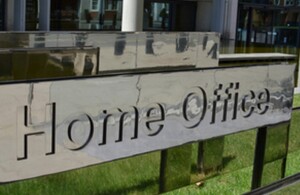New powers make it easier to tackle anti-social behaviour
Simpler and more flexible powers introduced by Coalition Government put victims and communities at heart of the response.

The Civil Injunction, one of six new anti-social behaviour powers introduced by the Coalition Government under the Anti-social Behaviour, Crime and Policing Act 2014, has come into force today (Monday 23 March).
It is the final stage in the Government’s overhaul of the old anti-social behaviour powers, as many had proven to be ineffective.
It can be issued by courts to stop a person who is committing anti-social behaviour, such as public drunkenness or noisy and abusive behaviour towards neighbours.
Quick resolution
It offers protection and a quick resolution for victims and communities.
It can also include positive requirements to help anti-social individuals address the root causes of their behaviour, such as attending alcohol awareness classes, or mediation sessions for neighbours to get the issue resolved.
The Civil Injunction is one of six new powers which replaces 19 pre-existing ones, including Anti-social Behaviour Orders (ASBOs).
A Home Office spokesperson said:
Anti-social behaviour is a blight on communities and the Coalition Government is determined to clamp down on it. Victims often feel powerless, but through our reforms we have given them a stronger voice.
The new civil injunction is quick and easy to use and will act as a real deterrent to perpetrators.
It will put victims and communities at the heart of the response.
With the new measures in place, we have fulfilled our commitment to reform anti-social behaviour legislation, as many of the old powers, such as the ASBO, had proven to be ineffective.
New powers
The other five new powers are: the criminal behaviour order, community protection notice, public spaces protection order, closure power, and the dispersal power.
The Coalition Government also introduced two further measures that give victims and communities a say in how local agencies deal with anti-social behaviour, the community trigger and the community remedy.